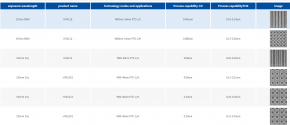Microguide Nano's revenue in the first three quarters was 970 million yuan-1.07 billion yuan, a year-on-year increase of 151.91%-177.88%.
Microguide Nano released a performance forecast stating that the company expects to achieve a cumulative operating income of approximately 970 million yuan to 1.07 billion yuan in the first three quarters of 2023, a year-on-year increase of approximately 151.91% to 177.88%.
As the leading supplier of semiconductor thin film deposition equipment in China, Microconducting Nano will continue to accelerate product development, industrial verification and application in various subdivisions in the semiconductor field, and achieve breakthroughs in the localization and industrialization of multiple thin film deposition and processing technologies. While maintaining the market competitiveness and share of ALD products, we will continue to launch more competitive thin film deposition series products such as CVD.
Microguide Nano pointed out that the application scenarios of the company's semiconductor ALD equipment all represent the diversified development direction of processes in various domestic semiconductor subdivisions. There are equipment orders in the fields of logic chips, memory chips, new display chips, and compound semiconductors, and it is gradually promoting the Client validation or acceptance.
The iTronix® series of CVD equipment launched by the company based on the strategic needs of customers' key process development is a new product series independently developed by Microguide Nano based on the strategic needs of customers' key process development; suitable for silicon oxide, silicon nitride, silicon oxynitride, The deposition process of various thin films such as amorphous silicon can be widely used in chip manufacturing in fields such as logic, storage, advanced packaging, display devices, and compound semiconductors.
In the field of semiconductors, Microconductor Nano is the first domestic equipment manufacturer to successfully apply mass-produced High-k atomic layer deposition (ALD) equipment to the front-end production line of 28nm node integrated circuit manufacturing. It has established partnerships with many domestic manufacturers. With an in-depth cooperative relationship, related products cover many subdivided application fields such as logic, storage, compound semiconductors, and new displays, and many key indicators of equipment have reached advanced levels.


